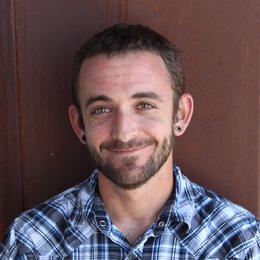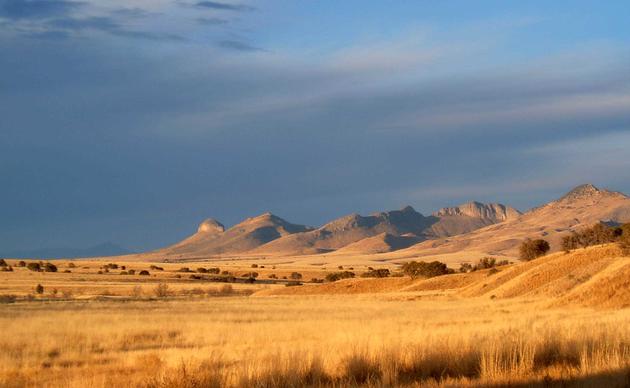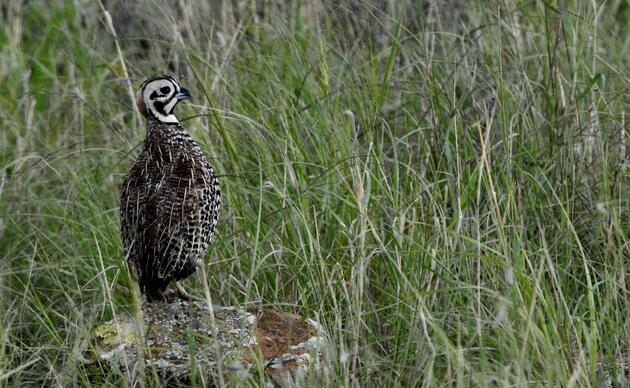Audubon Southwest’s Appleton-Whittell Research Ranch (AWRR) is a one-of-a-kind natural laboratory perfect for facilitating the studies key to tackling the biggest threats facing the region’s habitats, birds, and other wildlife. During any given year, there are fifteen to twenty active studies underway on the AWRR, investigating questions in the realms of wildlife biology, botany, soil science, hydrology, and more.
Helping to ensure that we continue to see valuable research being conducted on the ranch well into the future, we provide three exceptional scientists between the ages of 18 and 30 financial support and free lodging through our AWRR Research Fellowship Program. We need sound science to tell us what birds need, and we believe that securing conservation wins tomorrow depends on fostering a young, diverse cohort of aspiring scientists today.
But even the best science is worth little if the results aren’t shared! That’s why each month from September to November, we are offering a glimpse into AWRR research through our new 2024 AWRR Research Fellow Lunchtime Webinar Series. During each of these three one-hour sessions, you’ll have the opportunity to learn a bit about our fellows’ time on the AWRR, their research, and the conservation implications of their studies.
View past presentations:
Laura Nicholson: The Emory Oak - A cultural and ecological keystone species and an icon of the Southwest
View the webinar here.
A keystone plant in southeastern Arizona, Emory Oak feeds birds like the Montezuma Quail, Mexican Jay, and Acorn Woodpecker; provides shelter for nesting Azure Bluebirds and sleeping Coatimundi; and in ways defines the Madrean oak savannahs that can be seen from any window on the Appleton-Whittell Research Ranch. Just as importantly, Emory Oak acorns have long been gathered and consumed by Indigenous communities including the Yavapai, Tonto, San Carlos, and White Mountain Apache Tribes. During this lunchtime webinar, Appleton-Whittell Research Ranch Fellow Laura Nicholson will explore the identification and biology of this emblematic tree, the ways that emerging pathogens, drought, climate change, and other threats may be impacting its survival, and practical steps we can take to protect the Emory oak and the southwestern ecosystems that depend on it.
About the Speaker: Having first visited the Research Ranch while assisting with another project prior to starting graduate school, Laura was excited to return this year as a PhD student in Plant Conservation working out of Dr. Sara Souther and Clare Aslan’s Northern Arizona University Lab of Conservation Ecology. Laura’s work contributes to the Emory Oak Collaborative Tribal Restoration Initiative, a National Science Foundation-supported project co-produced with western Apache Tribes that aims to gather the knowledge needed to conserve the culturally and ecologically valuable Emory Oak. Through her research, she will be investigating biscogniaxua, a fungal disease that may be affecting Emory Oak survival and reproduction, along with the ways in which this disease, fire, drought, soils, and a changing climate may be connected.
The Emory Oak - Appleton-Whittell Research Ranch Webinar
Emma Sudbeck: Population Ecology of the Invasive American Bullfrog in Southeast Arizona
View the webinar here
The American bullfrog (Lithobates catesbeianus) is an invasive amphibian that creates problems for native species around the world. In southeast Arizona, permanent water sources are few and far between, creating a uniquely harsh environment for amphibians, yet bullfrogs still prosper in this environment and threaten native herpetofauna and other wildlife. Efforts to eradicate bullfrogs are underway, but since these efforts are time consuming and expensive, it is important to ensure they're effective by using specific knowledge of bullfrog ecology. During this lunchtime webinar, dive into Emma's efforts to understand bullfrog movement and reproductive ecology as she explores her time working with this invasive species within the diverse landscapes surrounding the Appleton-Whittell Research Ranch.
About the Speaker: Joining us this year as a first-year master’s student out of the University of Arizona’s School of Environment and Natural Resource and with the guidance of the Arizona Game and Fish Department, Emma is working to gather the data needed to manage one of the greatest threats to Arizona’s aquatic wildlife, the invasive American bullfrog (Lithobates catesbeianus). Through her research, she hopes to fill gaps in knowledge around bullfrog dispersal and reproductive ecology, providing wildlife managers the best available data with which to inform their eradication efforts. With a landscape level approach and sites including the Huachuca Mountains, Canelo Hills, and Babacomari Ranch, Emma’s work will undoubtedly benefit the Research Ranch as we work to control this invasive species within our own borders.
Marcus Williams: Eyes of Three to Regulate Ultraviolet Light - Investigating the Role of the Parietal Eye in the Ornate Tree Lizard
View the webinar here
Lizards require exposure to ultraviolet light (UV) for healthy metabolism and bone development, but the mechanisms of how they detect and regulate it are poorly understood. Appleton-Whittell Research Ranch Fellow Marcus Williams and others predict that lizards' parietal eye might be the answer. Sometimes called a “third eye," the parietal eye is a light detecting organ that sits atop the heads and between the true eyes of many lizards, frogs, salamanders, and fish. While we know it plays a role in the detection of light, our understanding of its full function is extremely limited. During this lunchtime webinar, learn about Marcus' time on the Appleton-Whittell Research Ranch and how his work in the field and the lab is helping to unravel the mystery.
About the Speaker: An undergraduate student at Virginia’s Christopher Newport University and a 2024 AWRR Research Fellow, Marcus has been captivated by animals his entire life, with a particular affinity for reptiles and amphibians. This passion led him to join the lab of Dr. Matthew Lattanzio where he participates in investigating ultraviolet light regulation in lizards, an area of study long overshadowed by the assumption that temperature, not light, is the driving force behind reptile behavior. Through lab-based studies of the AWRR’s Ornate Tree Lizards (Urosaurus ornatus), Marcus hopes to unravel the mystery of how lizards detect ultraviolet light, work that will undoubtedly have implications for reptile conservation in a warming, drying climate.




